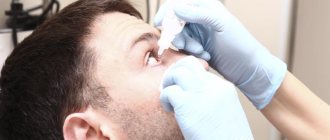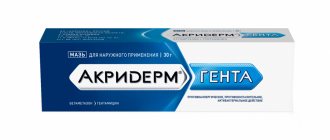- Amoxicillin for facial acne
- Application
- Warning
- The therapeutic effects of Amoxicillin on acne are as follows:
- General recommendations for patients with acne
- Reviews from a dermatologist about the drug
Acne is a common skin condition that, according to WrongDiagnosis, affects nearly 85 percent of people in the United States between the ages of 12 and 24, and is roughly the same today in CIS countries. It is an inflammatory disease that is characterized by the appearance of various lesions and blemishes on the skin .
Application
Poll: When did your acne appear? (Number of votes: 4295)
I've been suffering all my life
It's been a couple of years now
About a few months
Recently
To vote, click on the desired answer. results
The dosage is often quite high at first and then reduced based on the effectiveness of the treatment, manifested in the level of reduction in the number of acne. Amoxicillin is taken orally twice a day. For a positive effect of treatment, it will take at least 3 weeks, and for complete recovery, as a rule, it will take up to 3 months Chronic use of amoxicillin can contribute to the development of bacterial resistance to amoxicillin, so amoxicillin and other oral antibiotics are used to treat acne under the supervision of a physician, and then eventually their use is stopped due to the body becoming accustomed to their effects.
Amoxiclav: composition
Amoxiclav is a successful combination of clavulanic acid and amoxicillin. Each formulation of the drug may use various additional components, including:
- aspartame;
- hydrogenated oil;
- flavorings;
- talc;
- silica;
- iron oxide.
Amoxiclav can be taken orally or used intravenously. Most often, tablets are prescribed for treatment of various bacterial infections, since the vast majority of diseases are transmitted by patients at home.
The dosage of tablets can be different: from 250 mg to 875 mg amoxicillin + 125 mg clavulanic acid in each dose of antibiotic.
Warning
Before using this drug, first talk to your doctor to find out if amoxicillin is right for you. There are precautions that your doctor will help you evaluate. For example, tell your doctor if you have asthma, are pregnant or breastfeeding, are taking birth control pills, or have been whether you have diseases related to the liver or kidneys.
Amoxicillin can cause diarrhea and stomach distress. So if you take amoxicillin, you can take probiotic supplements that contain acidophilus, such as yogurt with active cultures, to increase the "good" bacteria in your digestive system.
Despite the fact that acne is not an infectious disease, antibiotics are traditionally used for its treatment as an important element of therapy. Antibiotics have been successfully used in clinical practice for more than half a century. They at one time radically changed the system and approach to the treatment of infectious diseases.
The need for antibiotics in the treatment of acne is explained by the fact that their use (both internal and local) reduces the colonization of propionic bacteria Propionibacterium acnes, as well as other nonspecific pathogenic flora (streptococci, staphylococci, Escherichia coli, etc.). Antibiotic preparations reduce the population of propionic bacteria Propionibacterium acnes by 90% or more. In addition, they can significantly reduce the severity of the acne inflammatory process.
The widespread use of antibiotics has led to the development of resistance and ineffectiveness of some antibacterial drugs.
Amoxicillin, recommended for the treatment of acne, works like most antibiotics, suppressing and destroying microorganisms in the sebaceous gland. Due to the contact of microorganisms on injured skin, an abscess on the skin in the form of pimples can develop. With blood, the infection spreads from one area of the skin to another, and pimples appear throughout body, even if a person is careful not to touch problem areas.
Amoksiklav®
Before starting treatment, it is necessary to interview the patient to identify a history of hypersensitivity reactions to penicillins, cephalosporins or other beta-lactam antibiotics. In patients who are hypersensitive to penicillins, cross-allergic reactions with cephalosporin antibiotics are possible.
Serious and sometimes fatal hypersensitivity reactions (anaphylactic as well as severe skin adverse reactions) to penicillins have been described. The risk of such reactions is highest in patients with a history of hypersensitivity reactions to penicillins, as well as atopy. If allergic reactions occur, treatment with the drug should be discontinued and appropriate alternative therapy should be initiated.
If the infection is proven to be caused by microorganisms sensitive to amoxicillin, the advisability of switching from amoxicillin/clavulanic acid to amoxicillin should be considered.
During a course of treatment, it is necessary to monitor the state of the function of the hematopoietic organs, liver, and kidneys. In patients with impaired renal function, the dose should be adjusted according to the degree of impairment.
In order to reduce the risk of developing side effects from the gastrointestinal tract, the drug should be taken at the beginning of a meal.
In patients receiving a combination of amoxicillin and clavulanic acid together with indirect (oral) anticoagulants, an increase in prothrombin time has been reported in rare cases. When co-prescribing indirect (oral) anticoagulants with a combination of amoxicillin and clavulanic acid, monitoring of relevant indicators is necessary. To maintain the desired effect of oral anticoagulants, their dose may require adjustment.
In some cases, prolonged use may lead to overgrowth of non-susceptible microorganisms. Superinfection may develop due to the growth of microflora insensitive to amoxicillin, which requires a corresponding change in antibacterial therapy.
In patients with impaired renal function, as well as when taking high doses of the drug, seizures may occur.
If infectious mononucleosis is suspected, the drug should not be used, since amoxicillin can cause a measles-like skin rash in patients with this disease, which makes diagnosing the disease difficult.
Taking allopurinol during treatment with amoxicillin may increase the likelihood of allergic skin reactions.
The appearance at the beginning of treatment of generalized erythema with pustules, accompanied by an increase in body temperature, may be a symptom of acute generalized exanthematous pustulosis. If such a reaction occurs, you should stop taking the drug and refuse further therapy with amoxicillin.
Amoxiclav® should be used with caution in patients with signs of liver failure.
Hepatic side effects were observed predominantly in men and elderly patients and may be associated with prolonged treatment. In children, these phenomena were observed very rarely. In all groups of patients, signs and symptoms usually appear during or shortly after the end of treatment, but in some cases they may appear several weeks after the end of treatment. They are usually reversible. Liver side effects can be severe, and deaths have been reported very rarely. In almost all cases, they were observed in patients with a severe underlying disease or during the simultaneous use of other drugs that can affect the liver.
Antibiotic-associated colitis has been observed during therapy with almost all antibacterial drugs, including amoxicillin, and the severity can range from mild to life-threatening. Therefore, it is important to consider this diagnosis in patients with diarrhea that occurs during or after administration of any of the antibiotics. If antibiotic-associated colitis develops, Amoxiclav® should be immediately discontinued, consult a doctor and begin appropriate treatment. In this situation, drugs that inhibit intestinal motility are contraindicated.
Crystalluria very rarely occurs in patients with reduced diuresis. During the use of large doses of amoxicillin, it is recommended to take sufficient fluids and maintain adequate diuresis to reduce the likelihood of amoxicillin crystal formation.
In patients with a catheterized bladder, regular checks of catheter patency are necessary.
Laboratory tests: High concentrations of amoxicillin give a false-positive reaction to urine glucose when using Benedict's reagent or Fehling's solution.
It is recommended to use enzymatic reactions with glucosidase.
Clavulanic acid may cause nonspecific binding of immunoglobulin G (IgG) and albumin to red blood cell membranes, resulting in false-positive Coombs test results.
There have been cases of positive test results using the Bio-Rad Laboratories Platelia Aspergillus enzyme immunoassay in patients receiving amoxicillin/clavulanic acid who were subsequently free of Aspergillus infection. Cross-reactions with non-Aspergillus polysaccharides and polyfuranoses have been reported using the Platelia Aspergillus test. Therefore, caution should be used when interpreting positive test results in patients receiving amoxicillin/clavulanic acid, and they should also be confirmed using other diagnostic methods.
General recommendations for patients with acne
It is important to correctly identify and treat the root causes of acne, since their appearance can be accompanied by diseases such as indigestion, gallbladder and pancreas diseases, gynecological inflammatory diseases, hormonal imbalance and others.
- Avoid or reduce your intake of sweets, fried and salty foods, as well as chocolate, coffee, cocoa, alcoholic and carbonated drinks.
- Take vitamins and fiber-rich vegetables, fruits, berries, muesli, porridge along with yogurt and other dairy products.
- Take care of your skin Keep it clean at all times.
- Avoid intense exposure to sunlight.
- Do not use creams or cosmetics containing oils.
- Use cosmetic milk, emulsions, gels with a balanced Ph factor.
- Make an appointment with a dermatologist. Clean your skin regularly under the supervision of a specialist.
- Do not visit saunas or spas.
Indications for use of Amoxiclav
The use of the drug is so widespread that some doctors starting their therapeutic practice prescribe it at every opportunity. In the situation with diseases of the otolaryngology organs, this is:
- otitis, including purulent;
- tonsillitis;
- sinusitis;
- pharyngolaryngitis.
When the urinary system is affected, Amoxiclav can also be prescribed. These diseases include chronic cystitis, prostatitis, and urethritis.
Diseases of the respiratory system are rarely treated without amoxicillin. For bronchitis of bacterial etiology and pneumonia, this particular drug is used. In addition, the antibiotic has shown its effectiveness against:
- infections affecting bones and connective tissue;
- soft tissue diseases caused by bacterial infection;
- cholecystitis;
- diseases of the pelvic organs.
Some types of surgery require the patient to take a course of antibiotics to prevent superinfection.
Amoxiclav: instructions for adults
The main rule of taking antibiotics is to follow the prescribed course of treatment. The mistake patients make is that at the first sign of a retreat in the symptoms of the disease, many give up treatment, believing that long-term antibiotic therapy causes irreparable damage to all body systems. However, in fact, this is precisely how resistant colonies of microorganisms are formed, which over time adapt to life even under the influence of an antibiotic. For example, for cystitis, a one-time dose of the drug relieves pain and pain already on the second day of treatment. But this is only the absence of symptoms.
The bacteria that caused this damage to the urinary system have not yet died, they have only lost their ability to provoke unpleasant symptoms of the disease. Stopping treatment early will allow the surviving bacteria to evolve so that the next time taking the same drug does not prevent them from multiplying and being active.
A single and daily dose is prescribed by the attending physician, because it depends on the severity of the disease and the patient’s condition. As a rule, the maximum dosage of Amoxiclav in the amount of 875 + 125 does not exceed twice the dose of the drug per day with an interval of 12 hours. To achieve maximum effect, you need to stick to the same hour of taking the drug. The duration of the course, regardless of the single dose and the number of prescribed doses, cannot be shorter than 7 days.









